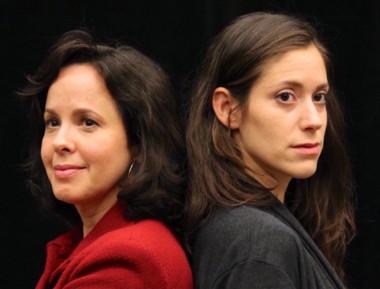Two weeks ago in this space, I bemoaned the under-representation of women playwrights and directors on so many of the region’s stages. I said that out of 35 full productions at the area’s six professional legit theaters this past summer, six were written by women and eight had women directors.
Well, I was wrong, in both an embarrassing and a discouraging way. Two of those six woman-authored plays, I said, were written by one person, Sharr White. That’s embarrassing, because it turns out Sharr White is a man. I had made a gender assumption, seeing “female” in the name Sharr and in the tone and content of both plays, The Other Place and Annapurna. The former focuses, deeply and sympathetically, on a female main character, and in the latter, a two-hander, the woman is the one who’s not a self-absorbed bastard. And it’s discouraging because disqualifying Mr. White makes things look even worse in the gender equity department.
But that gaffe set me wondering: Is there something in a woman-written play that sets it apart from a man-written play? Is there a particular sensibility that informs and imbues plays flowing from a female pen? If so, what is it, and if not, why should we care which gender writes the plays, so long as women’s points of view and women actors are well represented on stage?
I put those questions to a couple of women professionals in area theater. Sheila Siragusa directed last summer’s only production with both a woman playwright and director—and an all-woman cast, to boot—The How and the Why, by Sarah Treem, performed at New Century Theatre by Lisa Abend and Suzanne Ankrum (pictured). Siragusa told me, “What sets apart a woman-written play is that everything treated in that play—every choice—is poured through the lens of a woman’s experience of the world. A culture will be enriched on myriad levels by ‘hearing’ art that sees the world from as many points of view as make up that culture.”
Kristen van Ginhoven is artistic director of Berkshire-based WAM Theatre, a company whose core mission is “a focus on women theatre artists and stories of women and girls.” For her, as she recently told an interviewer, privileging women’s voices on stage is less about a distinctive “voice” and more about “creating the opportunity for equal representation. Working towards equal and diverse representation in telling our stories … inevitably leads to greater understanding of the entire human race with our myriad histories, beliefs and goals.”
Four years ago, when I did a survey of plays by women in this region’s theaters, the score was Men (not including Shakespeare) 26, Women 13. This year’s count of 35 to 4 is even more dismal, and things don’t look much rosier nationally. In a year when all three finalists for the Pulitzer Prize for Drama were women (including Annie Baker, the winner, for The Flick), the Broadway season had not a single new play by a woman. American Theatre magazine’s 2013-14 list of “The Top 20 Most-Produced Playwrights (Whose Name Is Not Shakespeare)” contains just three women (Sarah Ruhl, Amy Herzog, and Katori Hall) and its “Top 10 Most-Produced Plays” include only Herzog’s 4000 Miles and Nina Raine’s Tribes.
As for my own apparent inability to distinguish between male and female playwrights, Sheila Siragusa had this to say: “The day that women’s plays and women directors are equally represented is the day I will be more interested in seeing a male treatment of a woman’s point of view.”•
Chris Rohmann is at StageStruck@crocker.com and his StageStruck blog is at valleyadvocate.com/blogs/stagestruck.



